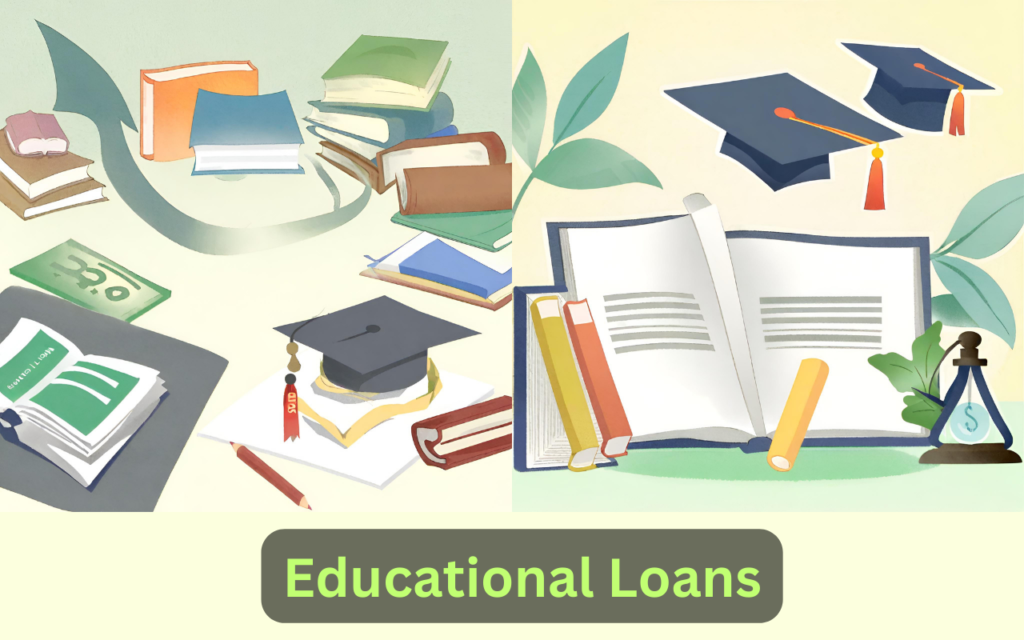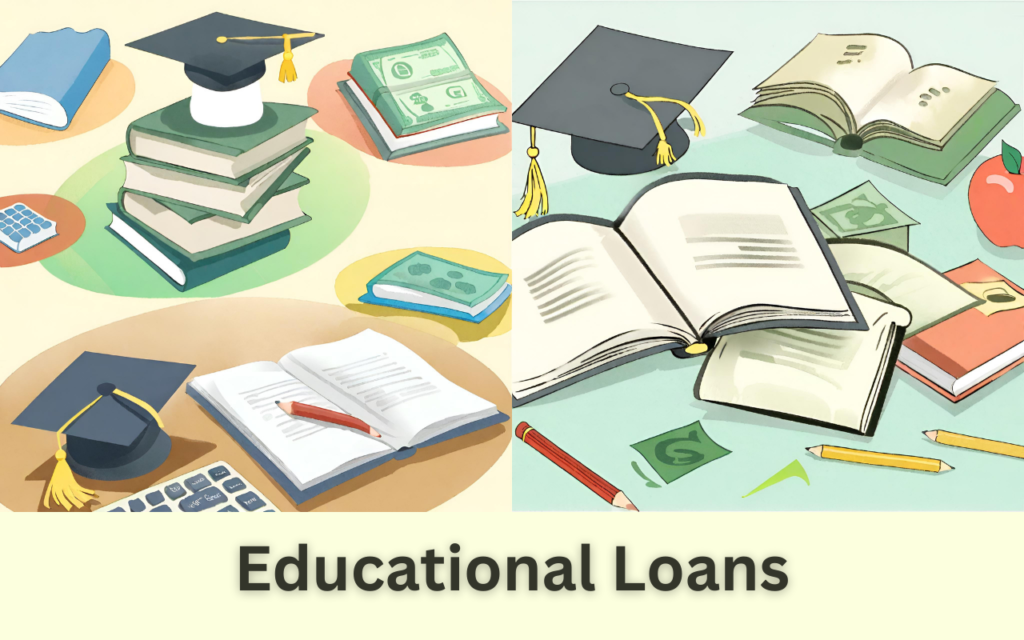Mastering Educational Loans: Your Guide to Financial Success
Loans make higher education possible by providing access to funds not required to be repaid until after graduation. But borrowing wisely through informed decisions, responsible use of funds, and strategic repayment enables you to gain new skills with minimal financial burden.
This comprehensive guide covers different types of educational loans, eligibility criteria, applications, repayment programs, responsible borrowing, debt management, and financial planning. Follow these best practices to optimize the loan process so you can focus on achieving your academic goals.
Types of Educational Loans and Key Differences
Two primary categories exist:
Federal Student Loans
Loans issued by the Department of Education. Options include:
- Direct Subsidized Loans: The government pays interest while you’re enrolled at least half-time. Must demonstrate financial need.
- Direct Unsubsidized Loans: You are responsible for interest during all periods. Financial need is not required.
- PLUS Loans: Higher limit loans available to graduate students and parents of dependent undergraduates. Require credit check.
Pros: Fixed rates, income-driven repayment, deferred payment during school. Cons: Lower borrowing limits, no cosigner option.
Private Student Loans
Loans offered by private lenders like banks and credit unions.
Pros: No federal income limits, potentially higher loan amounts, cosigners may help you qualify and lower rates.
Cons: No income-driven repayment, variable rates, require strong credit. Interest accrues during school.
Comparing federal and private loans enables choosing the optimal borrowing mix.
Federal Student Loan Eligibility and Maximizing It

General eligibility criteria:
- U.S. citizenship or eligible noncitizen status.
- Valid Social Security number.
- Enrollment in an eligible degree/certificate program.
- Satisfactory academic progress.
The key step is completing the Free Application for Federal Student Aid (FAFSA) annually as early as possible. This determines your Expected Family Contribution (EFC) which sets aid limits.
Lower EFC = higher eligibility. Update the FAFSA if your family’s financial situation changes. Scholarships also reduce unmet need that loans can cover.
Meet all requirements and document accurately to maximize potential aid.
How to Apply for Federal Student Loans with the FAFSA
Follow these steps to complete the essential FAFSA:
- Gather documents (tax returns, W-2s, bank statements, etc.) to simplify filling it out.
- Create your FSA ID login in advance. Use it to electronically sign the form.
- Provide personal and income details meticulously. Small mistakes can cost aid eligibility.
- List any schools you’re considering (maximum 10). More can be added later.
- Submit the FAFSA as early as possible on October 1 to maximize limited aid.
Double check all entries before submitting. Update the FAFSA if income or family changes occur.
Understanding and Optimizing Your Financial Aid Award Letter
Once submitted, you’ll receive financial aid award letters detailing offered aid. Steps to take:
- Carefully review grant awards, which don’t require repayment. Maximize “free” money first before loans.
- With loans, accept subsidized before unsubsidized to limit interest costs. Decline amounts you don’t absolutely need.
- Ensure your total aid equals the school’s listed “Cost of Attendance.”
- If costs exceed aid, appeal to the financial aid office for increased assistance if your financial situation has changed. Provide documentation.
- Don’t borrow more than realistically needed. Excess loans mean extra interest costs and repayment burden.
Follow financial aid appeal processes fully to get aid reconsideration if more assistance is required to cover direct school expenses.
How to Apply for Private Student Loans
Private student loans require separate applications with each lender. Key steps:
Research and Compare Lenders
- Compare interest rates, fees, and repayment terms across multiple lenders. Variable rates and fees can rise over time so weigh risks.
- Review benefits like cosigner release after a certain number of on-time payments.
- Read fine print for covenants like minimum GPA requirements to retain loans.
- Negotiate for the best rates, especially with a creditworthy cosigner or strong credit yourself.
Submit Applications
- Many lenders allow fast online applications with near instant decisions.
- Provide personal information, school details, requested loan amount and required documents.
- Review terms closely before eSigning loan agreements. Understand legal obligations.
Compare multiple lenders to find the optimal loan terms for your situation.
Federal Student Loan Repayment and Forgiveness Programs
For federal borrowers, key programs provide relief:
Public Service Loan Forgiveness (PSLF)
Forgives federal loans after 10 years of payments while working for government or eligible non-profits.
Income-Driven Repayment (IDR) Plans
Lowers federal loan payments based on income and family size. Remaining balance forgives after 20-25 years of payments.
Research details to utilize federal repayment and forgiveness programs optimally based on your career goals and debt levels.
Tips for Borrowing Educational Loans Responsibly

Follow best practices when taking out loans:
- Calculate tuition, fees, housing, books, supplies, transportation and other costs. Borrow only what’s truly needed for direct school expenses.
- Understand the monthly payment implications after graduation. Use online calculators to estimate payments based on total borrowing.
- Exhaust grant, scholarship, work-study, and personal funding options first before taking loans whenever possible.
- Create a lean student budget that minimizes discretionary spending from aid money.
- Prioritize subsidized over unsubsidized loans for lower overall interest costs.
Living frugally and minimizing debt helps your financial life long-term.
Managing Educational Debt and Repayment
Once enrolled, proactively manage your loans:
- Track federal loans in “My Federal Student Aid” and private loans through lender accounts. Monitor balances and servicer details.
- Research income-driven repayment plans to potentially lower federal loan payments.
- Make monthly payments on time. Sign up for auto-debit for ease and small discounts.
- Pay extra each month to reduce principal faster. Even a little over the minimum helps cut interest costs.
- Stay in touch with servicers and know options if struggling financially. Avoid default at all costs.
Continued diligence with your loans early enables smoother repayment after college.
Conclusion
With informed loan decisions, responsible borrowing, utilizing repayment programs, and proactive management, you can gain your degree with minimal debt burden and optimal finances.
Follow this guide to make the most of educational loans so you can focus on academic and career success. Don’t hesitate to ask counselors for help navigating the financial aid process. Your future is worth the investment.
Call to Action
Have experience with financial aid or educational loans? Share your story in the comments to enlighten future students with your lessons learned. Let’s foster beneficial conversations.
Thanks for reading. Any issues, contact us.
